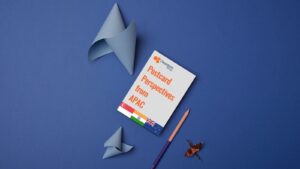Food Safety: From Problems to Opportunities
 Anyone growing, selling or eating food in the US could not have missed what seems like a growing number of recent pathogen outbreaks. There have been two outbreaks of E. coli in romaine lettuce. A cyclosporiasis outbreak was linked back to a McDonald’s restaurant. A badly timed salmonella outbreak affected Thanksgiving turkey products while another salmonella outbreak in ground beef led to the largest food recall in US history as over 12 million pounds were recalled before Christmas. However, despite 2018’s outbreaks and one in six people getting a foodborne illness every year the US is recognized to have one of the more robust food safety systems in the world.
Anyone growing, selling or eating food in the US could not have missed what seems like a growing number of recent pathogen outbreaks. There have been two outbreaks of E. coli in romaine lettuce. A cyclosporiasis outbreak was linked back to a McDonald’s restaurant. A badly timed salmonella outbreak affected Thanksgiving turkey products while another salmonella outbreak in ground beef led to the largest food recall in US history as over 12 million pounds were recalled before Christmas. However, despite 2018’s outbreaks and one in six people getting a foodborne illness every year the US is recognized to have one of the more robust food safety systems in the world.
Challenges and Opportunities
Avoiding false negative tests, where a test inaccurately comes back as safe, is the holy grail for food safety innovators. A false positive, while not a concern for public health, is costly to the industry as an end-to-end troubleshooting process (or wild goose chase) is required. Getting this right could significantly reduce the $15.6 billion economic cost per year caused by food safety issues. Controlled environment farming systems may reduce some of the risks, meaning some indoor growers could continue to sell romaine lettuce during recent outbreaks, but this will not eliminate the need for testing.
The recent US Food Safety Modernization Act holds importers accountable for foreign supplier having sufficient preventative controls in place to ensure food safety. While this increases the burden on importers to guarantee food safety, it also increases the potential market for US-based innovators in food safety systems. As food testing becomes digitized, further opportunities can be created by gathering and interpreting data. One example is using the data to enable food freshness dynamic sell-by dates instead of the current approach of using the most conservative shelf-life measure. Data could also be used to move from reactive response to outbreaks to proactive prediction and prevention.
Traditional business models in food testing offer testing as a service or sell testing kits. One opportunity is offering a hardware plus subscription model where you sell hardware than can run tests on-site and then leverage the data and process to build confidence among buyers. The adoption rate for food testing equipment is slow at first, and then very fast as a new test becomes proven and industry standard.
Innovators
Clear Labs’ core technology is based on next-generation sequencing technology (NGS). NGS is a high-throughput DNA sequencing system, sequencing 200 to 300 samples at a time and generates up to 25 million reads per a single experiment. This provides a universal test for all ingredients in a food sample, referenced against a large molecule database. Clear Labs is aiming to take the testing service it has built in-house and put it in the hands of the food producer, making a product that will scale much more easily than a centralized testing facility.
SafeTraces is also taking a technology that has been proven in clinical use and adapting it for the food industry. The company offers two solutions, SafeTracers and SaniTracers, using DNA extracted from seaweed that is incredibly rare in the environment to create an embedded “code” in the food. For example, sustainably sourced palm oil is chemically identical to non-sustainably sourced oils, whereas with SafeTraces you incorporate the barcode in the oil itself, guaranteeing provenance and quality. This explains why Bunge, the second largest palm oil trader in the world, participated in the company’s Series B in October 2018.
SafeTracers are the equivalent of placing a barcode on the food that can be read in a few minutes. It enables provenance and quality measurements in a matter of minutes. Identifying food has often relied on labeling attached to packaging, leaving the traceability system vulnerable to re-packaging and counterfeit goods. SaniTracers uses the same technology to verify food safety and sanitation on site. As the seaweed DNA behaves very similarly to pathogens, if it is applied before washing and treatment stage then any SaniTracer that is detected after treatment would indicate that the washing process has not been successful.
Keep an eye out for…
Hyperspectral imaging. This technology consists of a camera that can be placed above a conveyor belt and used to analyze the quality, freshness, and safety of food products. It combines digital imaging with spectroscopy to generate unique spectral signatures. Its first application is on reducing food waste and identifying foreign objects in food streams, but as it builds a database of imaged products safety and automated shelf-life prediction services are possible. ImpactVision, which recently raised funding from Maersk and The Yield Lab, are a leading innovator in this field.
Find out more about sustainable innovation in food and the companies leading the way
If you have feedback or would like to continue this discussion with me personally, please get in touch: chris.sworder@cleantech.com.


